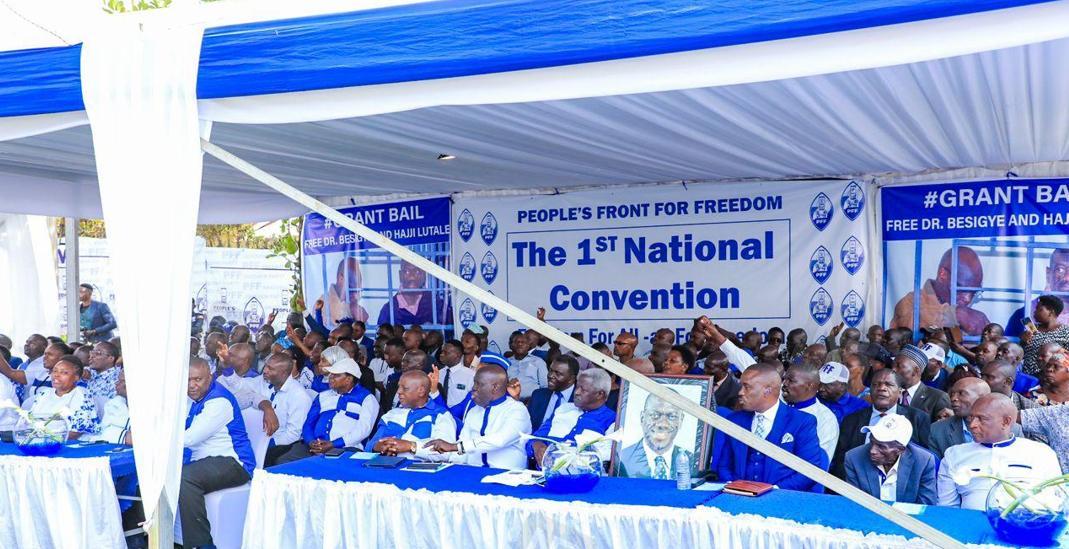Africa-Press – Uganda. As Uganda inches closer to the 2026 general elections, the campaign trail is becoming more colourful than ever—literally.
Across the country, political supporters have elevated party branding into a full-blown fashion trend, creating bold and stylish outfits inspired by their party’s signature colours.
What started as a spirited show of loyalty has now spiraled into a debate over whether this fashion wave could cause confusion at the polls.
“You’d think it’s the political parties changing their official attire,” remarked Kennedy Mutenyo, chairperson of the Democratic Party’s electoral committee.
“But in reality, it’s the supporters who’ve turned party colours into fashion statements.”
Once upon a time, political fashion in Uganda was dominated by plain, monochromatic T-shirts and caps handed out at rallies.
Now, supporters are pushing the envelope with tailored suits, sleek dresses, and elaborate accessories, all designed in their party colours.
The streets around major party offices, particularly in Kampala, are now buzzing with vendors who make brisk business selling customised outfits to enthusiastic supporters.
Some of these designs blur the lines between party identities, as overlapping shades become increasingly common.
This growing trend has raised eyebrows, with some political actors worried that the blending of colours could confuse voters.
Among the concerned voices is the Forum for Democratic Change (FDC), which has petitioned the Electoral Commission, urging it to issue clearer guidelines on the use of party colours.
Their fear is that, with some parties using nearly identical colour schemes, voters could end up misidentifying candidates on the ballot.
“We are not against fashion,” said Robert Centenary, a senior FDC member. “But when different parties start using nearly identical colours, it may lead to serious confusion among voters.”
However, not everyone is concerned. The National Unity Platform (NUP), which has made the colour red synonymous with its brand of youthful political activism, sees the trend as a sign of political creativity and vibrancy.
To them, this is not a crisis but a celebration of political engagement.
“Our supporters started this, and we’re proud of their innovation,” said Lewis Rubongoya, NUP’s Secretary General. “This shows that political branding can be artistic and powerful.”
Others, like the Democratic Front (DF) and the ruling National Resistance Movement (NRM), view the concerns as exaggerated.
Mike Mabikke, spokesperson for the Democratic Front, dismissed the alarm, arguing that no party has exclusive rights over fashion. He believes that such expressions should be welcomed as new ways for supporters to engage in politics.
NRM’s Secretary General Richard Todwong echoed a similar stance, pointing out that the Electoral Commission already provides clear legal guidelines on party branding. He insisted that supporters are free to express their loyalty however they wish, as long as parties remain within their legally registered colours.
Still, there are lingering concerns about overlapping shades—particularly with red being prominently used by both NUP and the Uganda People’s Congress (UPC), and blue shared between FDC and the People’s Freedom Front (PFF).
Mutenyo from the Democratic Party warned that such overlaps could muddy the waters during campaigns and eventually at the ballot box, especially among less informed voters.
Despite the growing debate, the Electoral Commission has chosen to remain largely silent for now. In a brief statement, a spokesperson said political parties are expected to adhere to their registered colours and respect the branding of their counterparts, as required by electoral laws.
However, no formal directive has been issued regarding the trend of fashion-driven political outfits.
As election fever intensifies and campaign colours continue to spread from posters to wardrobes, there is growing unease among some political actors who fear that the excitement around these outfits may ultimately backfire. T
o them, what appears as harmless creativity may soon evolve into what they call “dressing deception,” where voters are swayed or confused simply by the hue of a fabric.
“Fashion is fun,” Mutenyo cautioned, “but in an election, colours shouldn’t be allowed to dress deception.”
For More News And Analysis About Uganda Follow Africa-Press






